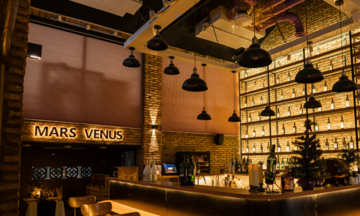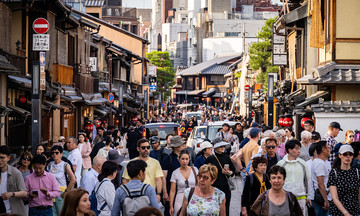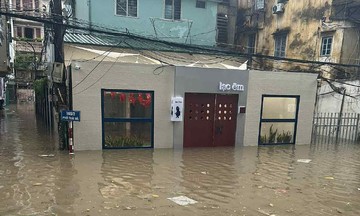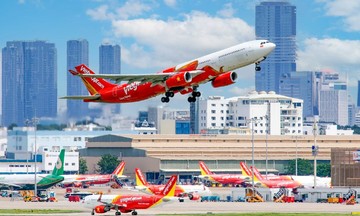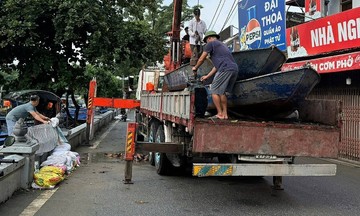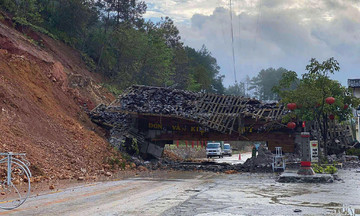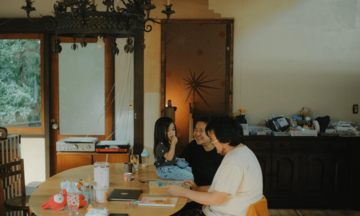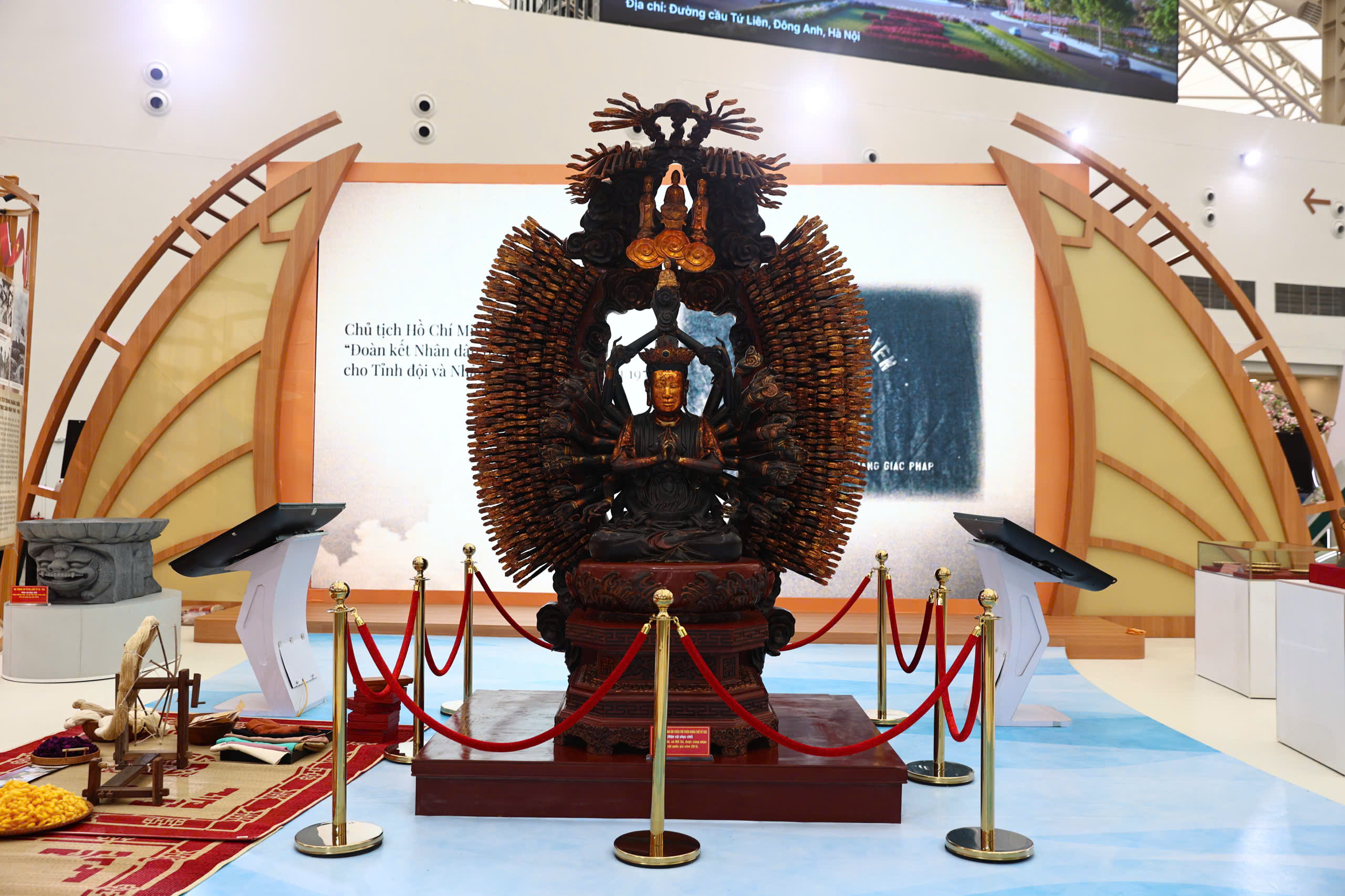 |
On the afternoon of 28/8, crowds of people and tourists lined up to visit the "80 Years of Independence - Freedom - Happiness" exhibition at the National Exhibition Center in Hanoi. This is the largest exhibition to date, bringing together 28 ministries and central agencies, 34 localities, and over 110 businesses and economic groups with more than 230 booths.
Provinces and cities showcased their unique symbols to visually tell their local stories. The combination of memories and modernity created a general picture that is both rich in regional colors and reflects the rhythm of a renewed life. Many iconic structures associated with local tourism became highlights, attracting visitors.
Pictured is the statue of the Thousand-Eyed Thousand-Armed Avalokitesvara Bodhisattva in Hung Yen province's booth.
 |
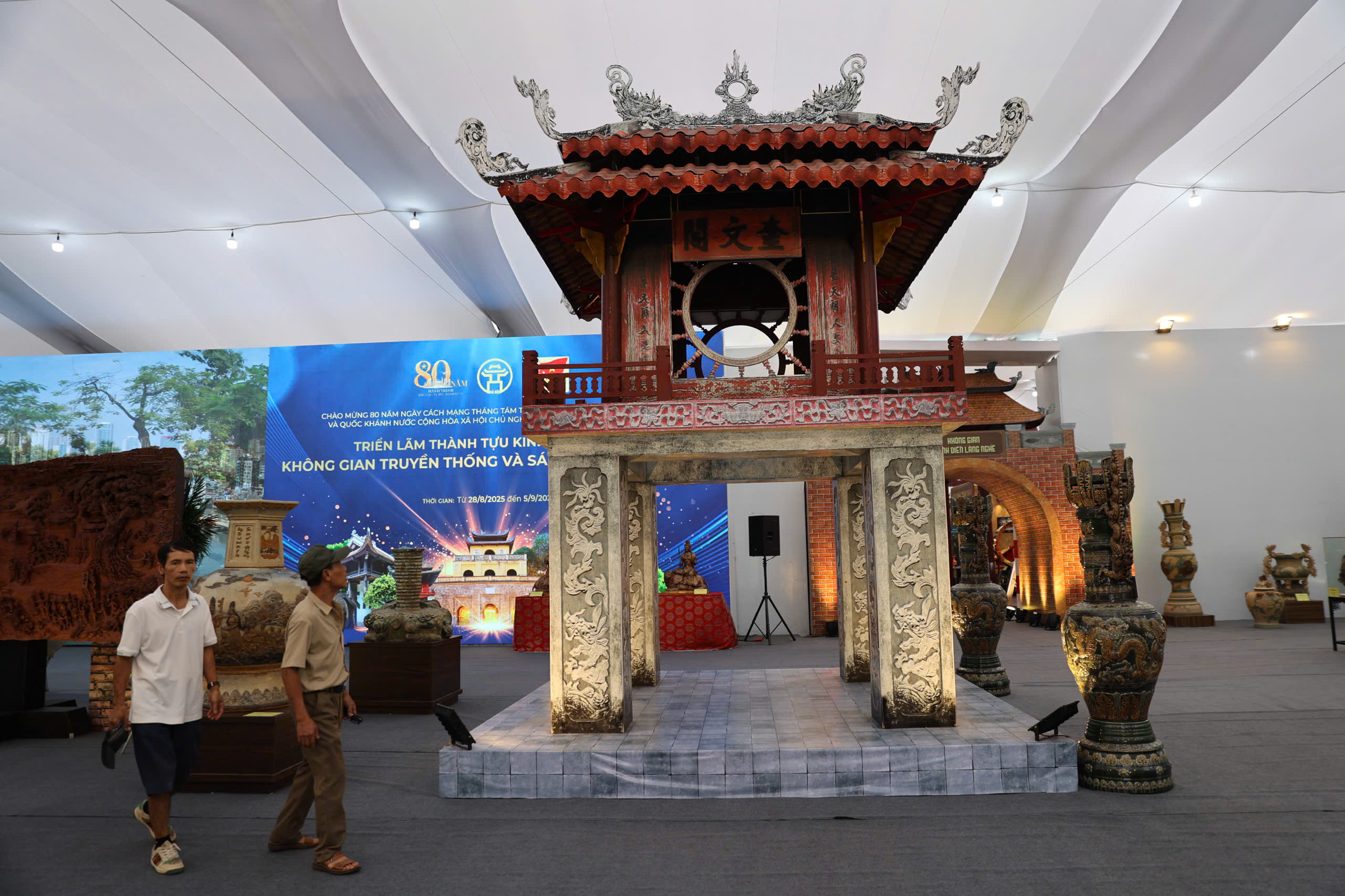 |
One Pillar Pagoda, Turtle Tower, and Long Bien Bridge are among Hanoi's famous landmarks that were replicated at the exhibition.
The Long Bien Bridge spans the Red River. It is 2,500 m long and 30.6 m wide, consisting of 19 steel spans on 20 pillars, 43.5 m high, with a railway and two roadways. All stone, steel, and materials were brought from France. In the early 20th century, it was the most beautiful and longest steel bridge in Indochina and one of the largest in the world. On 9/10/1954, French troops withdrew across the bridge, marking the complete liberation of Hanoi.
The Temple of Literature (pictured below) is considered a symbol of the enduring cultural and educational essence, and the tradition of respecting teachers and promoting virtue and talent of the nation.
It is also a famous cultural tourism address of the capital, attracting millions of visitors, and is also the venue for cultural activities and festivals such as the annual honoring of valedictorians.
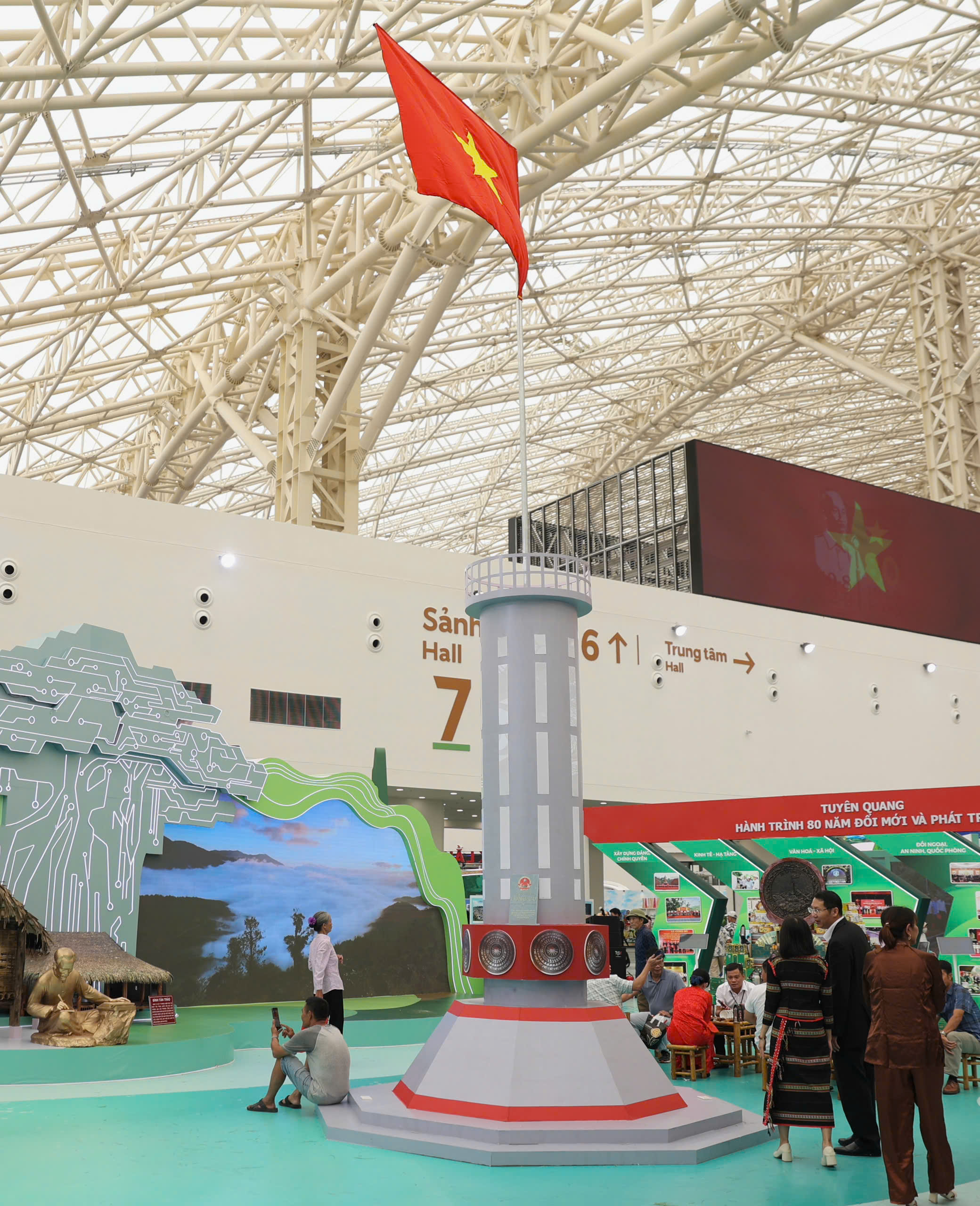 |
Tuyen Quang province's newest tourist icon is the Lung Cu flagpole, located on top of Long Son mountain, 1,470 m high. The structure is a smaller replica of the Hanoi flagpole with an octagonal architecture. Its base features eight blue stone bas-reliefs depicting the history and customs of Ha Giang. The top is decorated with eight bronze drum faces.
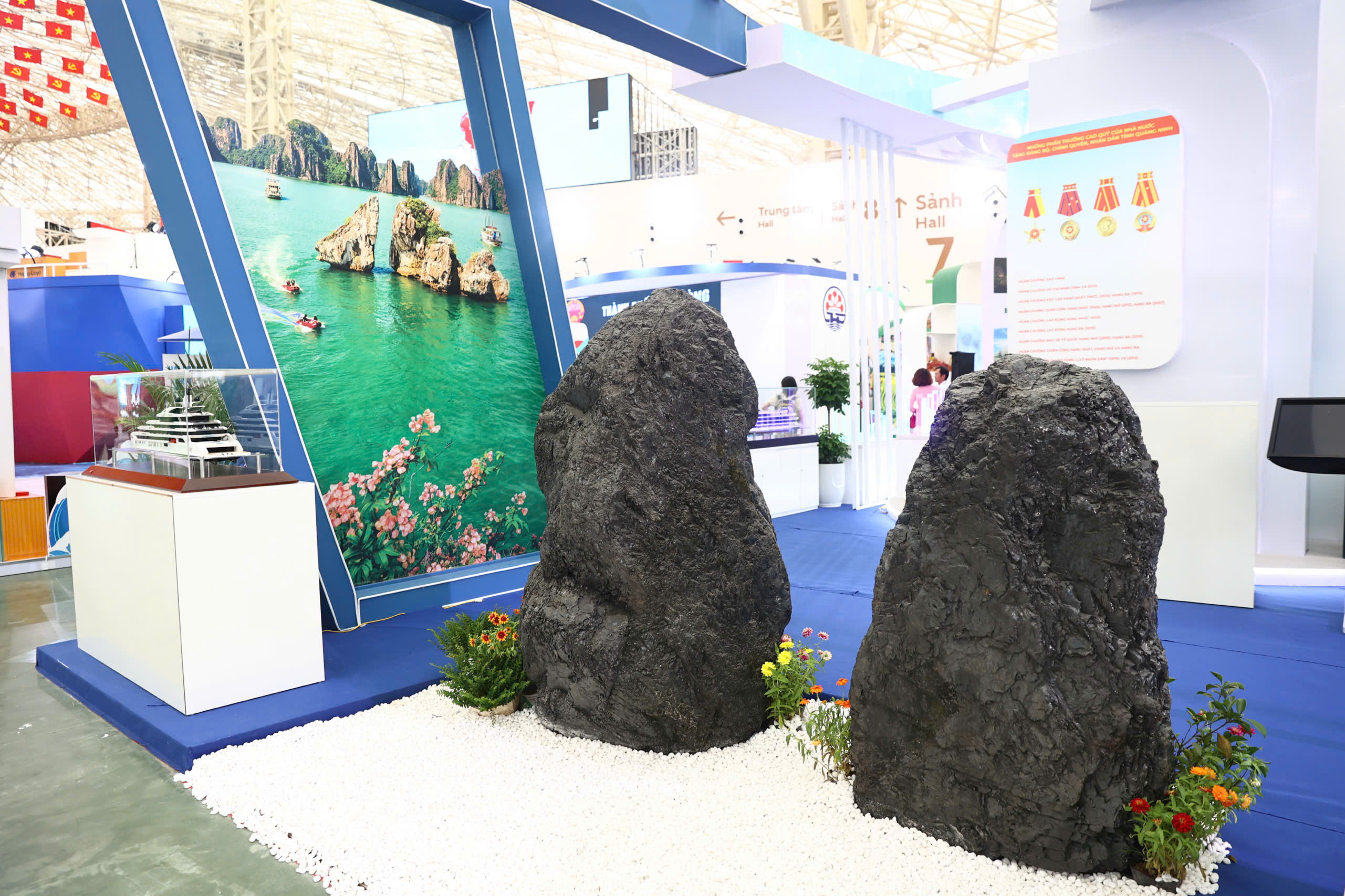 |
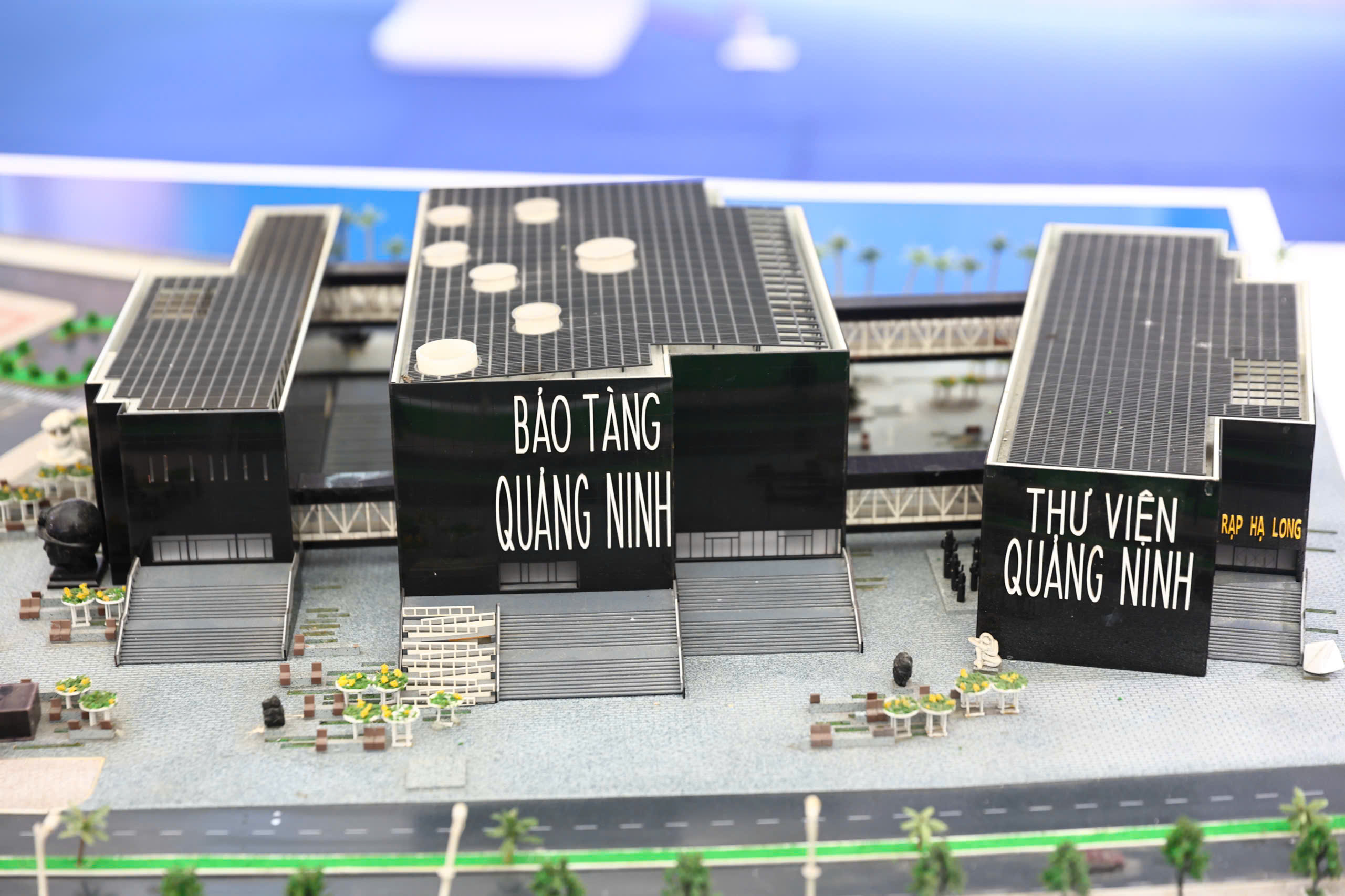 |
Ha Long Bay, located in the west of the Gulf of Tonkin, was chosen as the tourism symbol of Quang Ninh province. The bay has been twice recognized by UNESCO as a World Natural Heritage site for its aesthetic value (1994) and its geological and geomorphological value (2010).
The Quang Ninh Museum (pictured below) is a combined museum and library, with a total investment of 900 billion VND. It helps visitors learn about the coal industry, as well as the culture and life of Quang Ninh people.
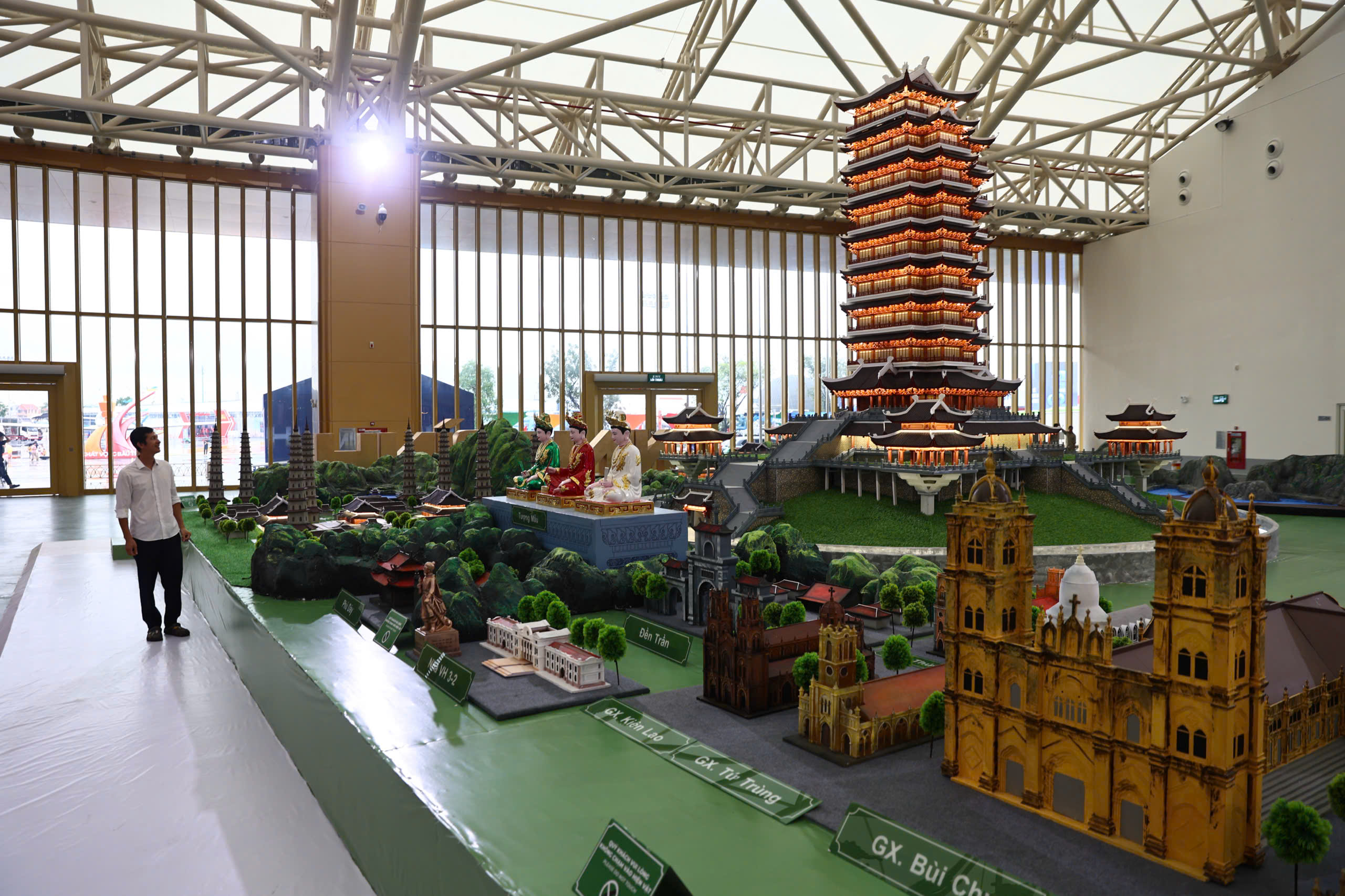 |
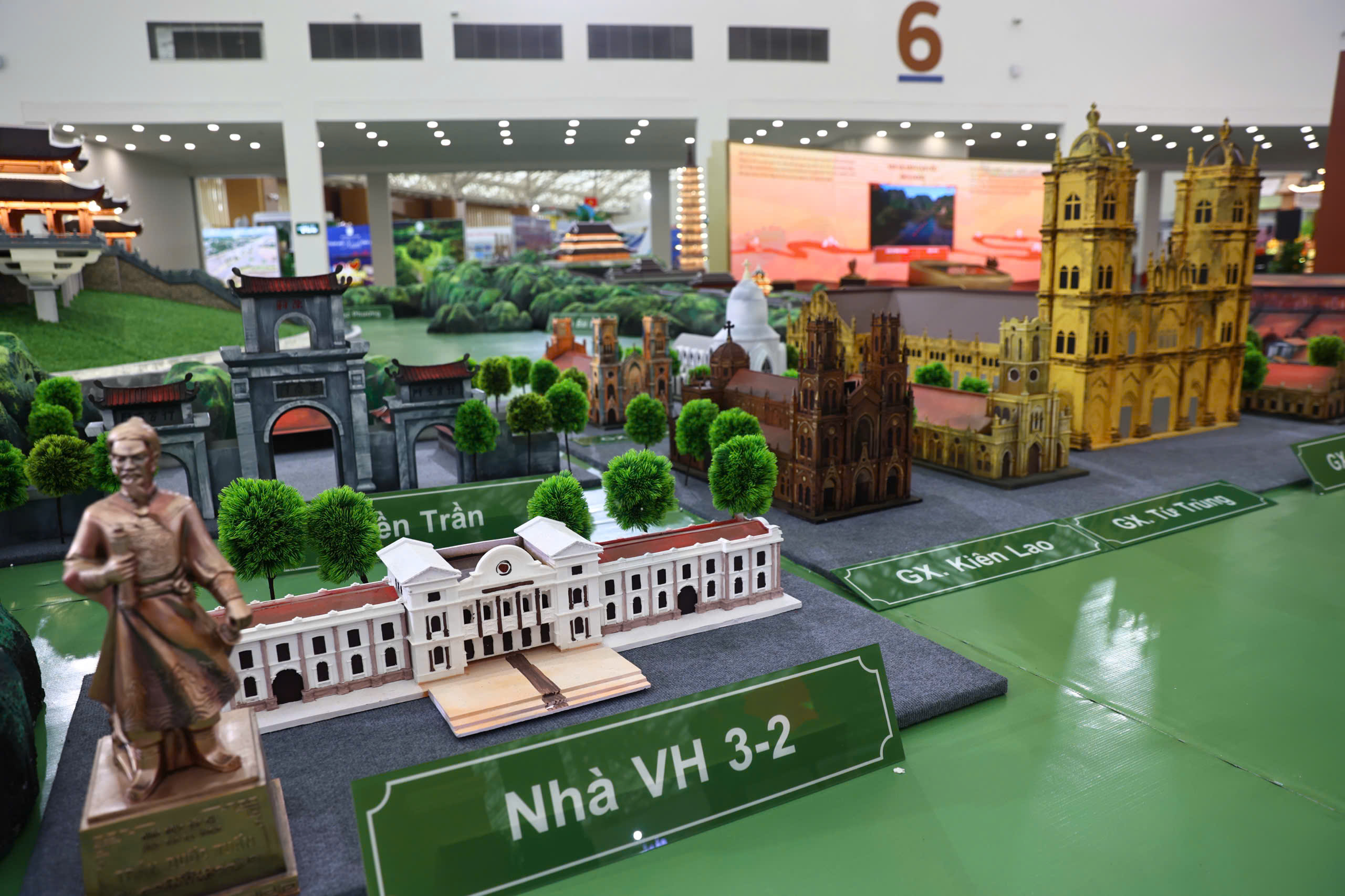 |
Ninh Binh is associated with many famous landmarks, including Hoa Lu, which was the capital of Vietnam from 968 to 1010 under the three dynasties of Dinh, Early Le, and Early Ly. It is also one of the four core zones of the Trang An Landscape Complex, recognized by UNESCO. In addition, spiritual destinations such as Bai Dinh Pagoda and Phat Diem Cathedral always attract many tourists.
After merging with Nam Dinh in 7/2025, the new Ninh Binh province also introduced additional tourist destinations from the former Thanh Nam land, such as Tran Temple (pictured below) and Catholic churches.
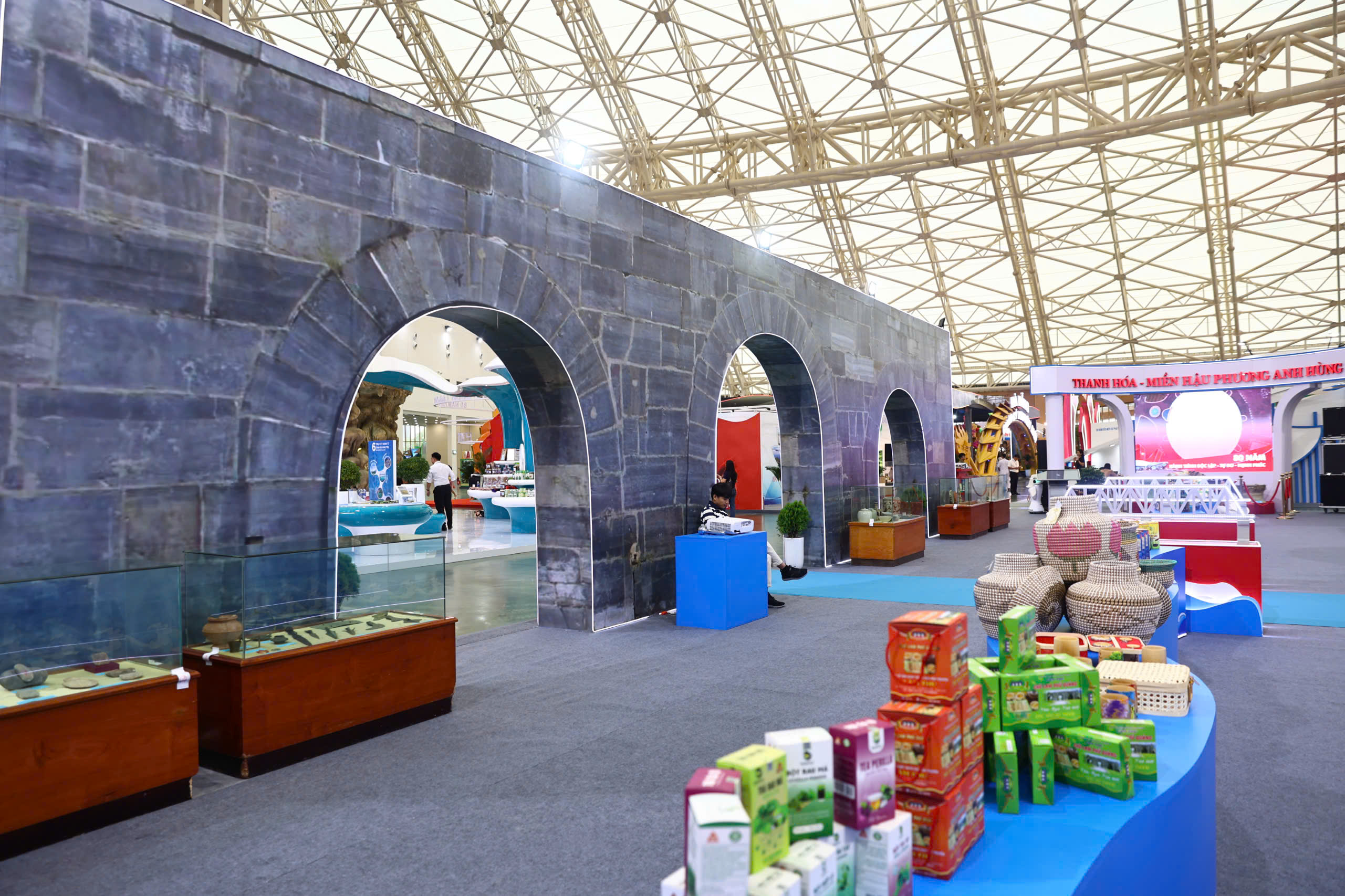 |
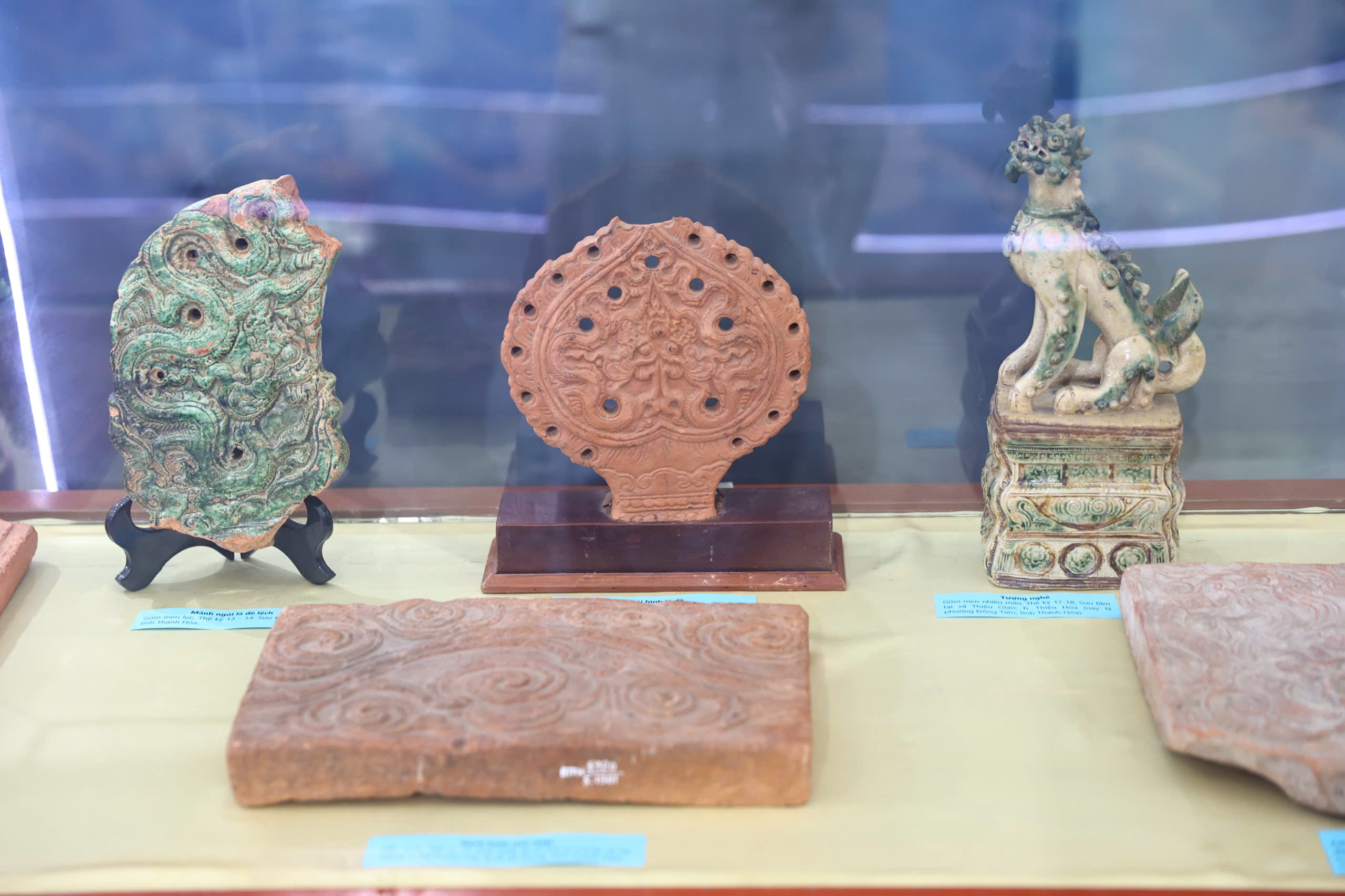 |
The tourism symbol of Thanh Hoa at the exhibition is a nearly 3 m high model of the Ho Citadel. The structure was built by Ho Quy Ly in 1397 and called Tay Do (or Tay Giai) to distinguish it from Dong Do (Thang Long). After its completion, he moved the capital from Thang Long to here. In 2011, the Ho Citadel was recognized by UNESCO as a world cultural heritage site.
The Thanh Hoa booth also displays many artifacts from the Le dynasty (pictured below), associated with the birthplace of this dynasty.
 |
Located on the Perfume River, Nghinh Luong Dinh is one of Hue city's symbols, recreated at the exhibition area next to the ceremonial gate and Quoc Hoc High School. The structure is located on the vertical axis from Hue Flag Tower to Phu Van Lau, built during the reign of King Tu Duc V (1852), and used as a resting place for the king before going down to the river wharf to board the dragon boat or as a place to enjoy the cool breeze.
In addition to checking in, many people and tourists viewed Hue specialties displayed at the booth, such as cakes and candies, Thanh Tien paper flowers, and listened to court music.
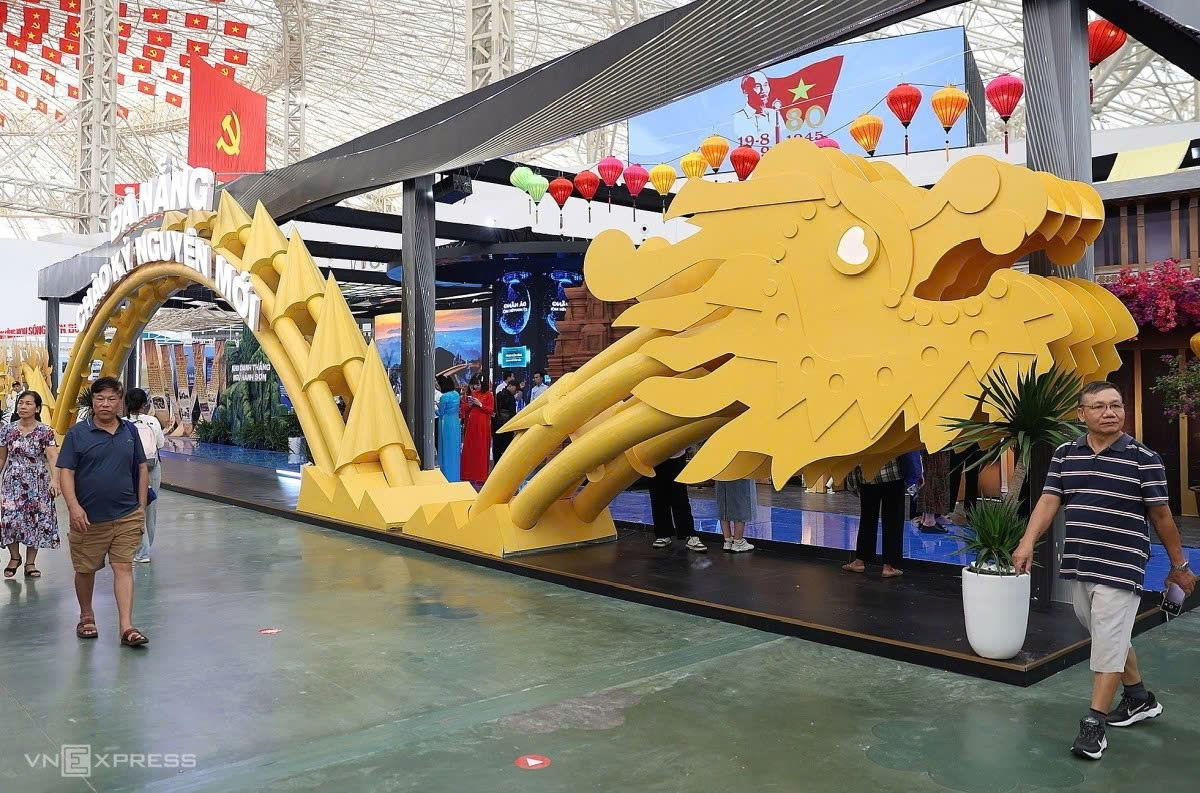 |
 |
Da Nang city's booth featured a nearly 4 m long model of the Dragon Bridge, made in quite detail compared to the real version. The bridge is located south of the Han River Bridge, about 1.5 km away. This is a bridge with a special architecture. The entire structure of the bridge simulates the shape of a dragon arching its back towards the sea.
At the exhibition, Da Nang also introduced two world heritage sites: My Son Sanctuary and Hoi An Ancient Town (pictured below). These are destinations that attract many international tourists; Hoi An alone welcomed 4.4 million visitors in 2024, an average of 2,000-5,000 visitors per day and nearly 10,000 visitors on weekends.
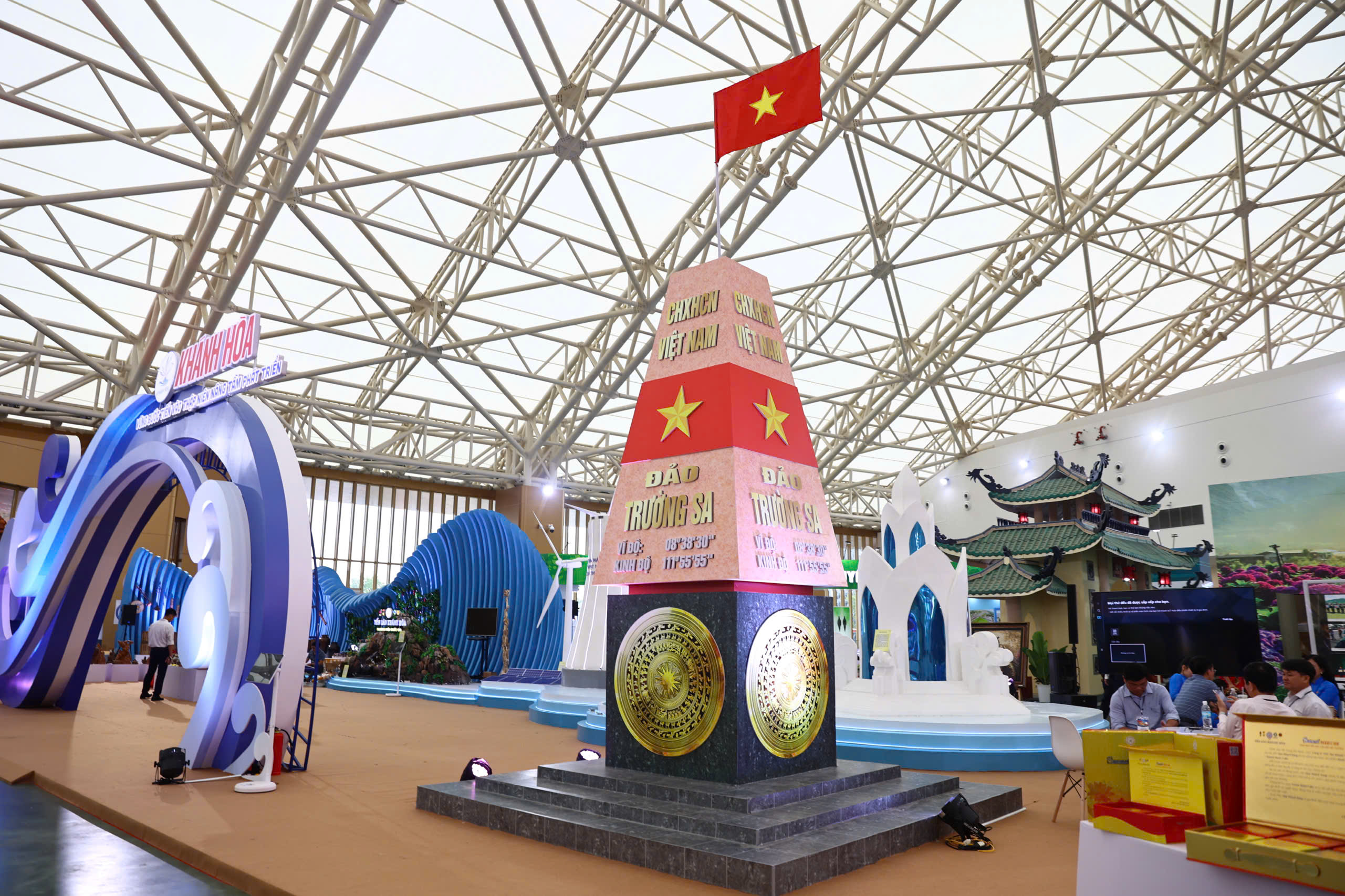 |
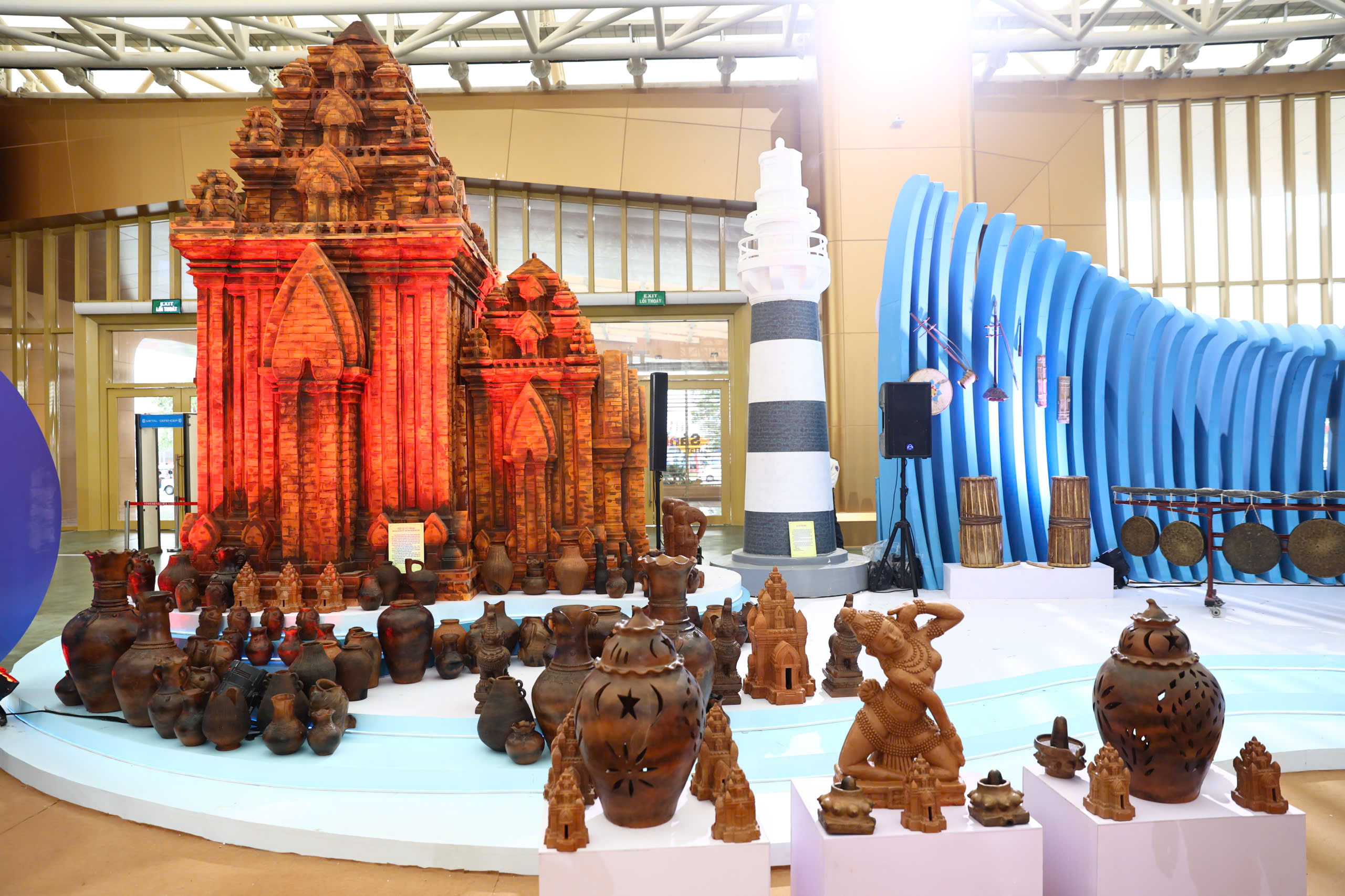 |
Khanh Hoa has long been one of the most attractive tourist destinations in Vietnam, endowed by nature with blue seas, beautiful bays, and many large and small islands. At the exhibition, the locality displayed a model of the Spratly Islands along with a sovereignty marker right in front of the booth.
The Ponagar Tower (pictured below), built from the 8th to the 13th centuries in Bac Nha Trang ward, is a Cham architectural complex associated with the belief in the worship of the goddess Thien Y A Na. The structure was ranked as a special national relic in 7/2025 and is the center of spiritual and cultural activities of the Cham-Vietnamese community. The Ponagar Tower Festival was recognized as a national intangible cultural heritage in 2012.
 |
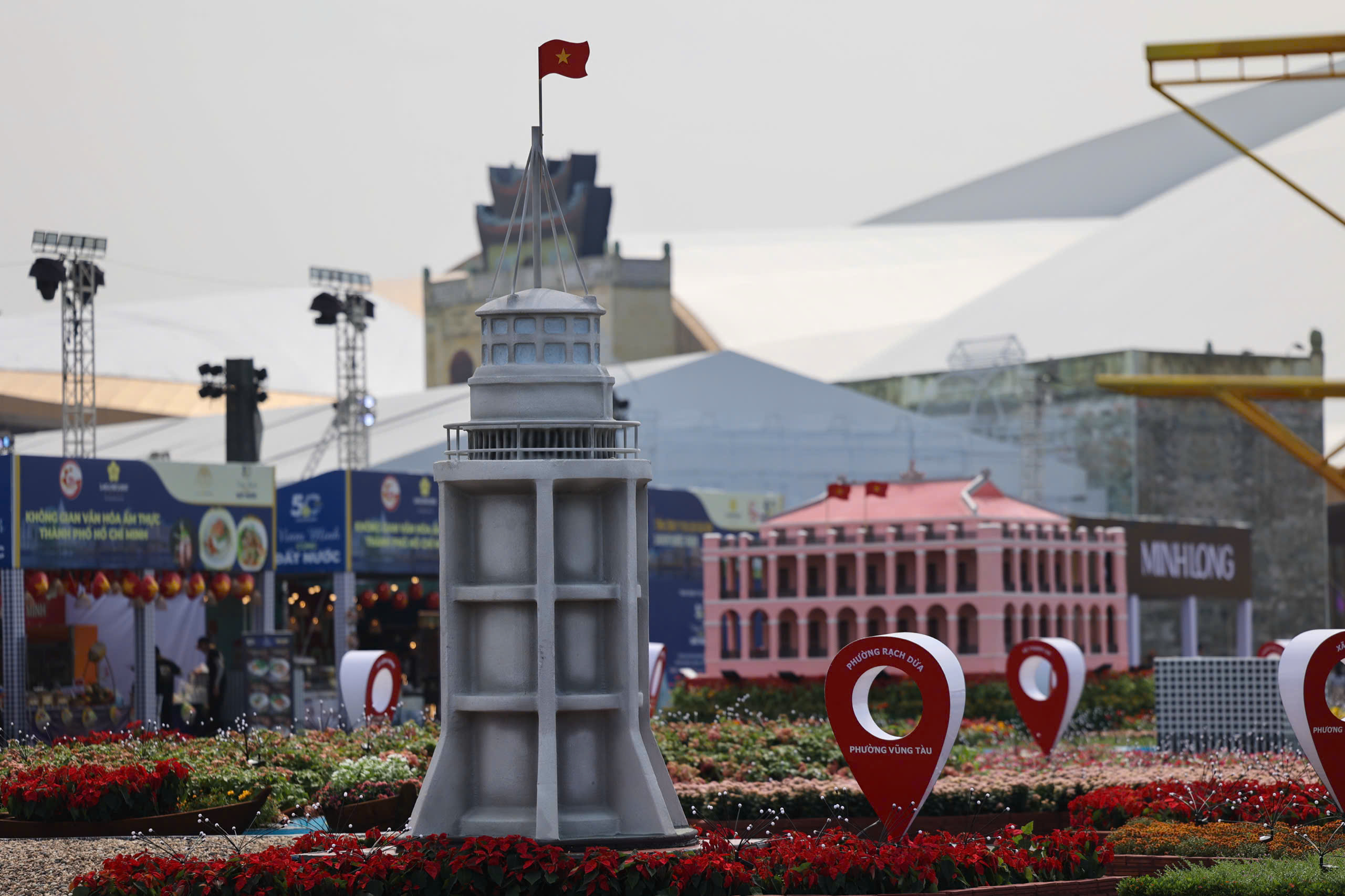 |
The Nha Rong Wharf, associated with the revolutionary life of President Ho Chi Minh, was chosen as a highlight in the booth introducing Ho Chi Minh City's destinations. After the merger, Ho Chi Minh City also introduced additional symbols of the former city and Binh Duong province, such as Thu Dau Mot Market, DK1 Rig, and Vung Tau Lighthouse. The models were displayed in a vibrant flower garden, accompanied by a map indicating the locations of the city's communes and wards.
Vung Tau Lighthouse (pictured below) is one of the attractive tourist destinations when visiting the coastal city. This is one of the oldest lighthouses in Vietnam, from which visitors can enjoy a panoramic view of Vung Tau sea.
The exhibition takes place from 28/8 to 5/9, with a total indoor and outdoor display area at the National Exhibition Center of approximately 260,000 m2. This is an opportunity for the public to look back on a period of arduous but glorious history, thereby strengthening their belief in the country's bright future.
Tuan Anh



